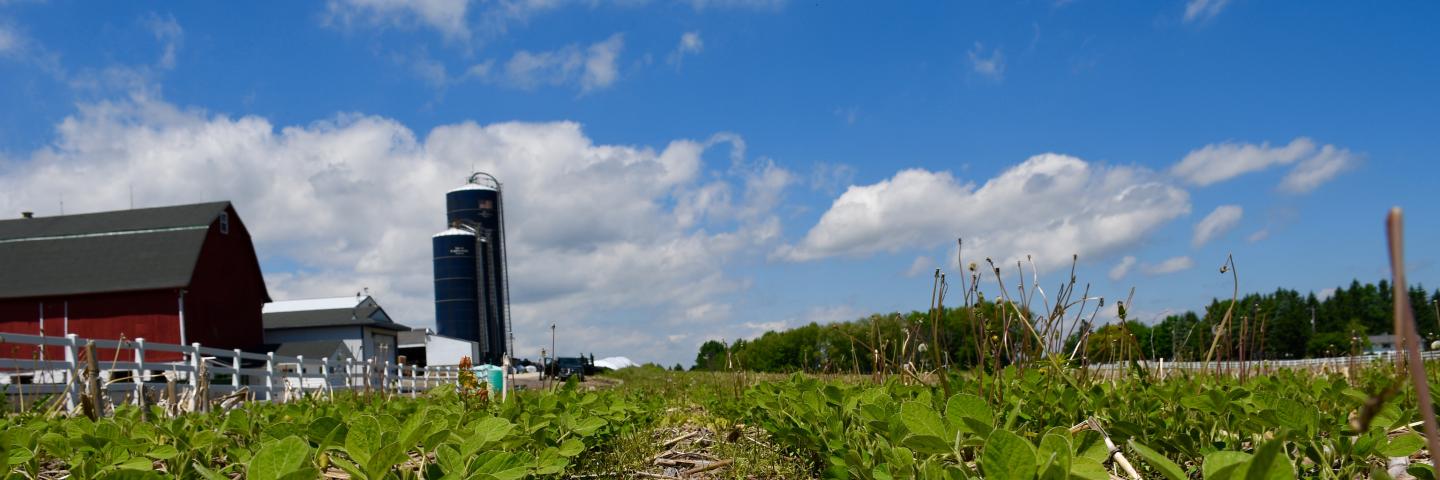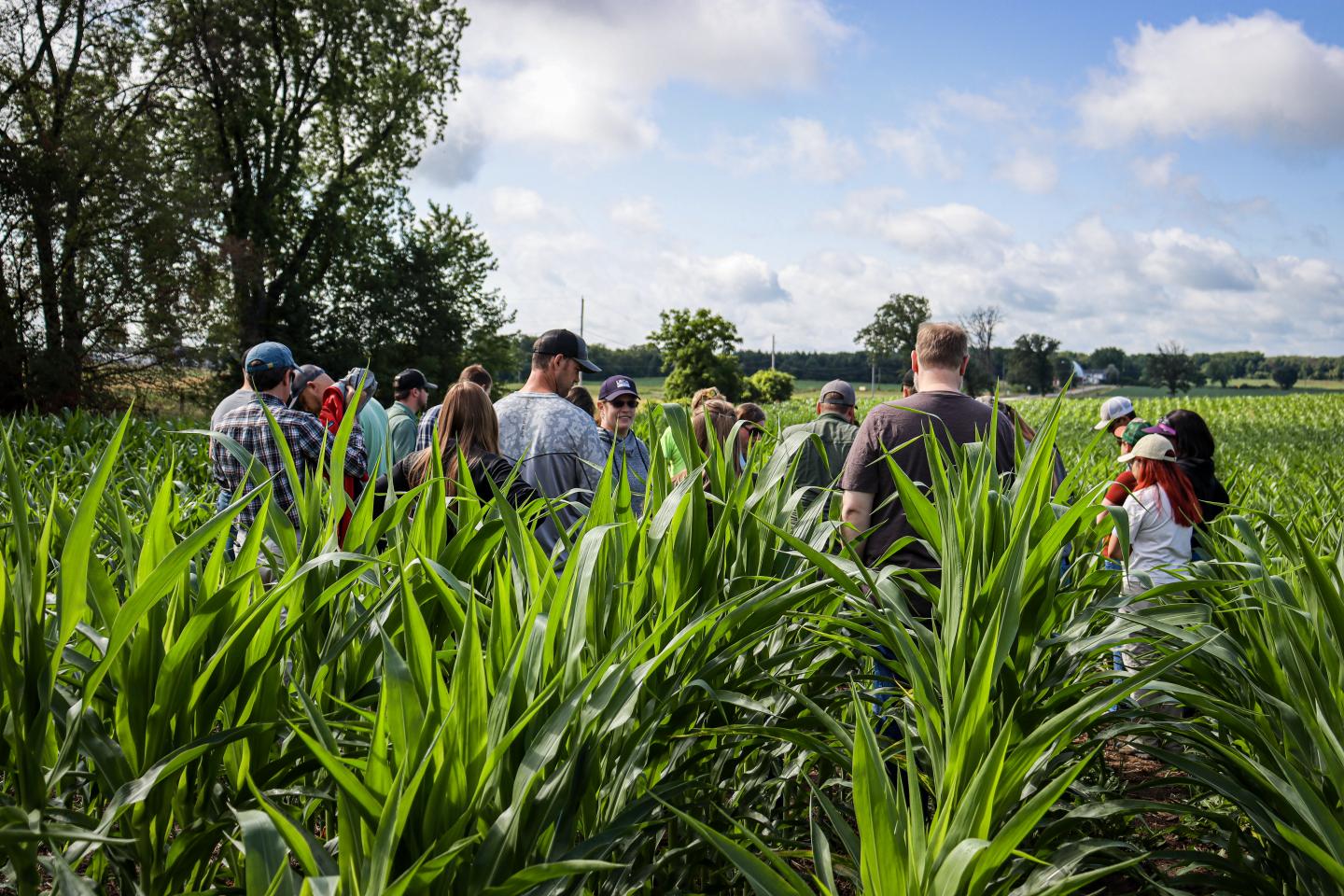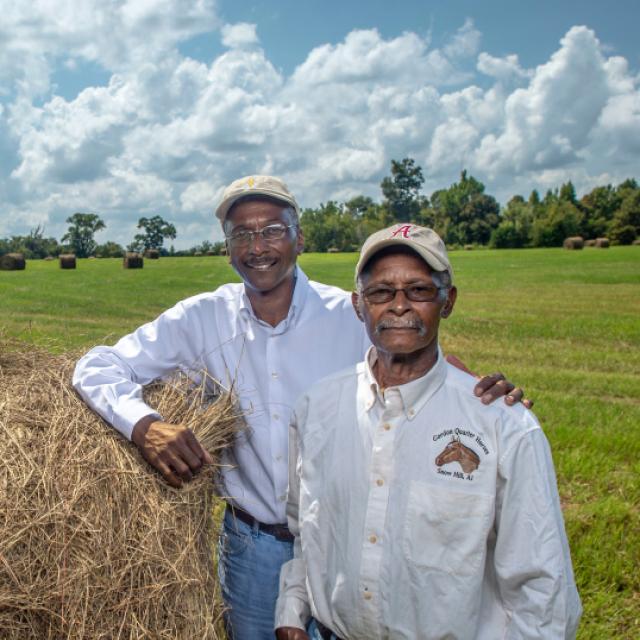
Success Story

The Regional Conservation Partnership Program (RCPP) is a partner-driven approach to conservation that funds solutions to natural resource challenges on agricultural land.
RCPP encourages partners to join in efforts with producers to increase the restoration and sustainable use of soil, water, wildlife and related natural resources on regional or watershed scales. Through RCPP, NRCS and its partners help producers install and maintain conservation activities in selected project areas. Partners leverage RCPP funding in project areas and report on the benefits achieved. The Secretary of Agriculture may also designate up to eight critical conservation areas to focus RCPP assistance.
Applications are accepted on a continuous basis.
Funding for RCPP is allocated evenly to projects in two different categories, state/multi-state and critical conservation areas. Conservation program contracts and easement agreements are implemented through the Agricultural Conservation Easement Program (ACEP), Environmental Quality Incentives Program (EQIP), Conservation Stewardship Program (CSP) or the Healthy Forests Reserve Program (HFRP). NRCS may also utilize the authorities under the Watershed and Flood Prevention Program, other than the Watershed Rehabilitation Program, in the designated critical conservation areas.
The Regional Conservation Partnership Program brings together a wide array of local and national partners, including Indian tribes, nonprofit organizations, state and local governments, private industry, conservation districts, water districts, universities and many others. So far, more than 2,000 partners are engaged in locally-led conservation efforts through RCPP.
The most successful RCPP projects share four common characteristics: they innovate, leverage additional contributions, offer impactful solutions and engage more participants.
Wisconsin State Resource Priorities

Local Working Groups provide recommendations on local natural resource priorities and criteria for conservation activities and programs.
The goal of this project is to restore, enhance, and protect oak ecosystems (forests, woodlands, and savannas) at a landscape scale to improve ecosystem health, connectivity, and biological diversity on private lands in regions of Illinois (IL) and Wisconsin (WI) where oak ecosystems historically thrived. Public lands where oak restoration is occurring by partner organizations and governments will be enhanced by this project’s focus on adjacent private lands, thereby creating an expansive, connected, matrix of restored oak ecosystem with substantial conservation benefits.
The project will enhance and maintain habitat for the Golden-winged Warbler (GWWA) and Kirtland’s Warbler (KIWA), two Species of Greatest Conservation Need (SGCN). Improving Forest Health for Wildlife Resources will promote voluntary, incentive-based conservation on private and Tribal lands. This project is part of a cooperative, full life-cycle, international initiative to restore the GWWA by government agencies and private conservation organizations have a strong interest in preventing the unnecessary and potential listing of the GWWA under the Endangered Species Act. Together, MI, MN, and WI have the largest remaining breeding population of GWWA in the world and have critical ecosystems to rebuild populations rapidly. The GWWA needs quality young forest with mature forest nearby to breed and successfully raise young. The KIWA is a conservation-reliant SGCN recently listed as federally endangered. This project seeks to improve young jack pine stands to increase KIWA habitat. Objectives of this project are to implement focal species best management practices on private lands through RCPP technical and financial assistance from 2021 through 2025.
The Regional Conservation Partnership Program (RCPP) is a partnership that leverages capabilities and resources, targets assistance where it is most needed, cooperatively engages project partners, and works collaboratively with agriculture producers, forest land managers, and Tribes. The adoption of project eligible conservation practices will improve soil health on permanently protected land. Case studies of farms will be developed that quantify the beneficial environmental and economic outcomes, equipping farmland protection partners with metrics and tangible examples they can share with landowners to increase conservation practice adoption on land protected from conversion to non-agriculture uses.
The Regional Conservation Partnership Program (RCPP) is a partnership that leverages capabilities and resources, targets assistance where it is most needed, cooperatively engages project partners, and works collaboratively with agriculture producers, forest land managers, and Tribes. This project focuses on the Yahara and Upper Sugar Rivers in Dane County, Wisconsin. The goal is to reduce phosphorus loss from cropland, especially during late winter and early spring, and improve soil health. The project is also expected to increase the organizational effectiveness of the three producer-led watershed groups in the project area.
The goal of this project is to address aquatic and riparian habitat impairment and water quality impairment within the Driftless Areas of Wisconsin, Minnesota, Illinois, and Iowa. The project is particularly focused on restoration of cold-water streams and seeks to pair instream habitat or aquatic organism passage with broader farm-scale conservation activities. In a setting where cropland is adjacent to the stream, ideal projects will have an existing riparian easement) and will set-aside a 40’ area from the top of bank to provide a stream buffer.
The project will innovate and adopt conservation for the objectives of improving water quality, soil quality, habitat while permanently protecting farms in the Milwaukee River Watershed.
NEW Water and partners will address water quality degradation and inadequate habitat in the subwatersheds of Ashwaubenon Creek and Dutchman Creek in the lower Fox River watershed of the Great Lakes Basin. Partners include Outagamie County Land and Water Conservation District, Brown County Land and Water Conservation District, Oneida Nation, Austin Straubel Airport, and UW-Extension. The partner will bring to the project their resources and abilities to promote the project, plan and implement conservation, and monitor and model results of applied conservation practices on private lands. Implemented practices through the USDA funding will include structural practices such as but not limited to grassed waterways, water and sediment control basins, prescribed grazing, wetland restoration, open channel flow and streambank protection. Partner funds will enhance the project by implementing management practices such as nutrient management, no-till, and cover crops.
The project will improve water quality within and downstream of the Oconomowoc River Watershed through the implementation of cropland conservation practices and the permanently protection of farmland.
The Oconomowoc River Watershed Water Quality and Soil Loss Improvements will not be offering a signup in 2024.
The Regional Conservation Partnership Program (RCPP) is a partnership that leverages capabilities and resources, targets assistance where it is most needed, cooperatively engages project partners, and works collaboratively with agriculture producers, forest land managers, and Tribes. This project focuses on the driftless area and will increase terrestrial habitat to benefit grassland birds and pollinators, reduce nutrient and sediment loss from vulnerable lands, improve the economic well-being for farmers and rural communities, and extend NRCS resources to historically underserved producers. This project will focus exclusively on perennial solutions and include transitioning sensitive cropland to permanent and productive vegetation, restore degraded grasslands and oak savannas, support prescribed grazing systems, promote agroforestry and control of invasive species.
The Driftless Area (DA) was bypassed by the last continental glacier and features steep valleys, sandstone bluffs and more than 600 unique spring-fed creeks and ridges once covered in prairie and scattered oaks. This ancient landscape supports a variety of plants and animals, including dozens of uncommon species of birds of woodland and grassland habitats, reptiles and amphibians, and abundant populations of native fish found in the high concentration of cold-water streams. The DA's diversity of habitat provides critical habitat for dozens of species of concern in the State Wildlife Action Plans, and has been cited as one of North America's most important resources. Early agricultural practices that were not suitable for the unique landscape of the DA resulted in severe erosion and sedimentation. Land use practices and conservation efforts have helped heal the land, but the legacy of the past damage is still visible in the valleys and steep stream banks. For the past nine years Trout Unlimited's Driftless Area Restoration Effort has been working with partners to restore structural diversity, ecological function and overall health. This project will provide a new comprehensive, targeted regional approach to restoring prairie, oak woodlands and streams for the benefit of the many at-risk species and abundant concentrations of native species found in the DA landscape.
The Jo Daviess Conservation Foundation and its partners will target areas in the Driftless Area where land restoration and land protection will have the most positive impact on water quality by implementing permanent conservation practices that reduce pollution and sediment runoff into streams. RCPP funding will provide a new comprehensive, targeted regional approach to restoring cold-water streams and their riparian areas for the benefit of the many at-risk species. The project will assist landowners reduce pollution and sediment runoff through the adoption of key conservation practices. Agricultural Conservation Easement Program funding will purchase agricultural conservation easements to install permanent conservation practices such as riparian buffers and filter strips.
Our partnership will restore, manage and conserve wildlife habitat for monarch butterflies on agricultural and tribal lands using four main strategies: conservation planning and assessment; habitat improvement and best management practices; building an adequate seed supply for milkweed and nectar plants; and, enhancing organizational coordination and capacity. To provide the greatest conservation outcomes, the project will focus work within two NRCS Critical Conservation Areas: Prairie Grasslands Region and Mississippi River Basin. Targeted areas will be identified through a US Geological Survey-led initiative examining fine-scale opportunities for the restoration of milkweed and other pollinator plants. This project will contribute to national goals in terms of habitat and increase the number of monarch butterflies. This in turn will represent the best opportunity to avoid future regulations related to monarch butterflies from being imposed on farmers and ranchers in the future.
NOTE: Conservation Stewardship Program Funding is also available in this project, click here for more information.
This project will be the first in Wisconsin to apply groundwater modeling to help deliver conservation practices to the locations in the Central Sands region of Wisconsin which will most effectively address resource needs. The partners will use EQIP to install on-farm practices. Match funding will implement larger scale restoration and municipal and agricultural infrastructure improvements. Project outcomes will be improved instream flows and water quality, increased groundwater recharge, soil conservation, and improved fish and wildlife habitat.
This diverse partnership will implement cost effective conservation solutions that will improve water quality and soil quality along the impaired Milwaukee River corridor. A major tributary to Lake Michigan, the Milwaukee River is plagued with water quality degradation caused in part by high levels of phosphorous and sediment-laden runoff. Project objectives include: 1) recruit landowner participation in EQIP and CSP by promoting EQIP practices through demonstration workshops, agriculture innovation field days and incentives; 2) protect eight properties across 765 acres on priority agricultural lands using ACEP-ALE; and 3) coordinate and facilitate diverse groups - a farmer-led watershed group, working lands group and citizen advisory committee - to educate and promote conservation to farmers.
NOTE: Conservation Stewardship Program Funding is also available in this project, click here for more information.
This project, led by Tall Pines Conservancy (TPC), will use Agricultural Conservation Easement Program Agricultural Land Easements funding to acquire farmland easements at three different project sites in the watershed. Environmental Quality Incentives Program land practices will mitigate natural resource concerns at each project location. Additionally, Nutrient Management Plans will be developed as needed to identify resource concerns at the project locations. The long-term project goals are to decrease soil reduction; improve habitat quality; and reduce loading of sediments, nutrients, and pollutants into tributaries and lakes in the Oconomowoc River watershed. This will be accomplished by implementation of practices that conserve soil and slow overland flow in agriculture, forestry, and urban areas.
NOTE: Conservation Stewardship Program Funding is also available in this project, click here for more information.
Contact your local service center to start your application.
Do you farm or ranch and want to make improvements to the land that you own or lease?
Natural Resources Conservation Service offers technical and financial assistance to help farmers, ranchers and forest landowners.

To get started with NRCS, we recommend you stop by your local NRCS field office. We’ll discuss your vision for your land.
NRCS provides landowners with free technical assistance, or advice, for their land. Common technical assistance includes: resource assessment, practice design and resource monitoring. Your conservation planner will help you determine if financial assistance is right for you.
We’ll walk you through the application process. To get started on applying for financial assistance, we’ll work with you:
Once complete, we’ll work with you on the application, or CPA 1200.
Applications for most programs are accepted on a continuous basis, but they’re considered for funding in different ranking periods. Be sure to ask your local NRCS district conservationist about the deadline for the ranking period to ensure you turn in your application in time.
As part of the application process, we’ll check to see if you are eligible. To do this, you’ll need to bring:
If you don’t have a farm number, you can get one from USDA’s Farm Service Agency. Typically, the local FSA office is located in the same building as the local NRCS office. You only need a farm number if you’re interested in financial assistance.
NRCS will take a look at the applications and rank them according to local resource concerns, the amount of conservation benefits the work will provide and the needs of applicants. View Application Ranking Dates by State.
If you’re selected, you can choose whether to sign the contract for the work to be done.
Once you sign the contract, you’ll be provided standards and specifications for completing the practice or practices, and then you will have a specified amount of time to implement. Once the work is implemented and inspected, you’ll be paid the rate of compensation for the work if it meets NRCS standards and specifications.